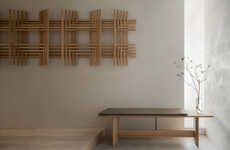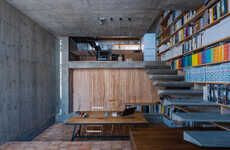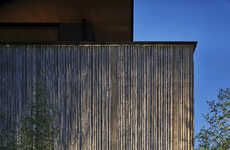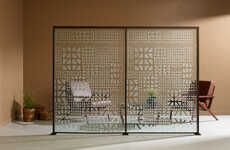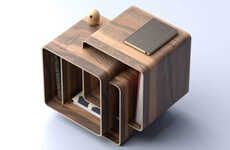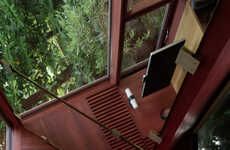
Office M-SA Expertly Juxtaposes Concrete and Wood in This Project
Kalin Ned — October 17, 2022 — Art & Design
References: meirishinohara & dezeen
The juxtaposition of concrete and wood in the interior of this house in Akishima, Tokyo is one of the leading aesthetic presences for the project, which was led by the Japanese architecture studio Office M-SA.
The warmth of the wood and the brutalist sensibilities of the concrete definitely create an interesting style that fluctuates in functionality, as well. While the wooden walls, ceiling, furniture, and floor are designed to carry the future potential of demolition or extension, the concrete foundation may maintain its place in the interior for a hundred years, according to the architects. There is even a wooden terrace as part of this development.
Office M-SA's use of concrete structures in the home was informed by the function of each space. The firm also creates areas for storage throughout the space.
Image Credit: Kazuhisa Kota
The warmth of the wood and the brutalist sensibilities of the concrete definitely create an interesting style that fluctuates in functionality, as well. While the wooden walls, ceiling, furniture, and floor are designed to carry the future potential of demolition or extension, the concrete foundation may maintain its place in the interior for a hundred years, according to the architects. There is even a wooden terrace as part of this development.
Office M-SA's use of concrete structures in the home was informed by the function of each space. The firm also creates areas for storage throughout the space.
Image Credit: Kazuhisa Kota
Trend Themes
1. Hybrid Material Interiors - The use of contrasting materials like wood and concrete in interior design is trending, presenting opportunities for innovative material combinations.
2. Flexible and Sustainable Design - The design of interiors that can adapt to future changes or have elements that can be repurposed or recycled presents an opportunity for disruptive innovation in the interior design industry.
3. Function-driven Design - Designing interiors based on the function of each space enables architects and designers to create spaces that are both aesthetically pleasing and efficient, leading to disruptive innovation opportunities in this approach to design.
Industry Implications
1. Interior Design - The interior design industry can take advantage of hybrid interior materials and flexible, sustainable design approaches to create unique and practical commercial or residential spaces.
2. Architecture - The architecture industry can innovate by incorporating function-driven design strategies that prioritize the use of durable materials and adaptability in building projects.
3. Construction - The construction industry can benefit from innovative material combinations and flexible design approaches that result in more sustainable and adaptable building projects.
4.7
Score
Popularity
Activity
Freshness




